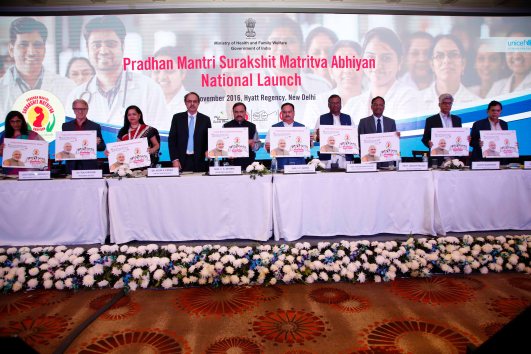Sharp anomalies in the taxation rates and structure across different industries such as telecom, tobacco, textiles, food processing and tourism , should be addressed to as the country moves in a transition period for implementing the Goods and Services Tax, the ASSOCHAM-KPMG paper has said in a joint paper for the GST Council.
The exhaustive paper stated that taxation structure, say, for, tobacco industry should not be based on some emotive issues and be rational enough to check a huge amount of illicit trade which stays outside the taxation net. It said instead of subjecting the tobacco and tobacco products at a higher than the standard rate, the entire sector should be placed under the standard rate with the focus of bringing exempted items under the GST net to eliminate the rampant illicit trade. As per IMF report high rates of GST / VAT lead to manipulation and fraud.
Similarly, for the telecom sector, the paper cautioned that GST may negatively impact the working capital cost since initial landed price of purchases including imports may increase due to increase in tax rates. Cost of procurement of services may increase to more than 18 per cent from the current rate of 15 per cent, which will be a challenge for the industry, especially if CENVAT credit on passive infrastructure and fuel consumption is continued to be denied.
Likewise, the ASSOCHAM-KPMG also went into the impact of GST on the textile sector and suggested ways to find an ideal situation. It said in case, India opts for higher tax rates under the proposed GST regime, and then in the long-term, it will lose its market share to the developing and highly competitive economies.
Hence, it is recommended that India also implements policies that capitalize on the potential of its textile and apparel industry so that the country has a higher bargaining power in procuring export orders in the international trade vis-à-vis other developing economies. Thus, the Government should make a conscious call to retain lower rate for this industry by introducing a special lower slab of 4 per cent to 6 per cent under the proposed GST regime along with full input tax credit of GST paid on goods and services used in the supply chain.
“As we are in a transition period, several industry sectors are faced with challenges of adapting to new tax regime. While the GST is a path-breaking reform, its implementation should be calibrated in a manner to cause least disturbance to the existing taxation structure. “The Government should unshackle its mind if it really wants to achieve the objectives of GST – Expanding the tax base, reduction in exemptions; mitigating cascading and double taxation, enabling better compliance through lowering of overall tax burden.
The Government should follow the recommendations of eminent economist like Dr. Vijay Kelkar and Dr. Arvind Subramanium, which suggest that moderate rate of taxes will expand the tax base resulting in high collections, which will be the success of GST. Otherwise it will be ‘Old Wine in a New Bottle’. ” Mr. D S Rawat, Secretary GeneralASSOCHAM said.
Elaborating, the paper said the tobacco industry has been the second largest contributor to Indian excise revenue after the oil and gas sector. The combined tax revenue collected from tobacco industry (Centre and States) was more than Rs 29,000 crore in FY 2014-15. Tobacco products are being cultivated in an area of about 4.68 lakh hectares (0.24 per cent) of total arable land in the country with a production of 800 million kgs13. The tobacco industry provides employment to nearly 4.5 crore people in India comprising farm labourers, farmers, traders, etc. Thus, the sector gives livelihood to a considerable size of the population, particularly rural women, the tribals and labourers who are under stress with no employment alternatives especially when India isexperiencing jobless growth for the last many years.
Under the GST regime, it is proposed to levy both dual taxes as well as higher rate of GST. The endeavor should be to tax the hitherto untaxed/ insignificantly taxed segments of the tobacco industry i.e. tobacco products other than cigarette as the consumption of such products is way higher than that of legal cigarettes. Thus, levy of standard GST rates with excise duty on a wider tax base will yield a higher tax revenue collection than continuing with levy of high rates of taxes on only one segment of the tobacco industry i.e. cigarettes.
For tourism sector, at present, different abatement schemes addressing different situations are available under service tax such as 30 per cent in case of composite package and 60 per cent for dining in a standalone restaurant. This is leading to ambiguity and complexity in determining the value on which service tax is payable. In order to overcome such situation, uniform tax treatment i.e. one standard rate dealing with all the situations should be introduced. The rates should be moderate to remain competitive.
Besides, in current regime, all the taxes cumulatively applicable to restaurants (i.e. VAT, Service Tax and other applicable taxes) increases the value on which tax is payable to more than 100 per cent. Such a situation increases the tax cost substantially. Therefore, a mechanism should be introduced whereby value on which GST would be applied should not increase 100 per cent in any case.
As for the food processing, the industry is taxed at a concessional rate/ zero rate. GST is likely to be based on minimal exemptions regime leading to increase in the tax cost for the food processing industry and inflation. A distinction needs to be made based on the ‘necessity’. Taking from the example of Canada the food products, which are essential for human consumption, should be taxed at zero rate. As food comprises a major part of the WPI, which is nearly 14.3 per cent, an increase in tax on food items will adversely impact WPI leading to higher inflation in the country.



